My wife and I are both very experienced board gamers and when we had children, we knew we wanted to bring them into the fold. When and how were questions we have been figuring out as we go. We've gotten advice from other board game parents as well as figured a few things out ourselves. Here's what we learned.
As our children grew up, we have tried a number of games with them; some with success, some without. Usually the issue were simply the rules were too complicated for their development at the time. Sometimes the game was too boring for them, but not often.
Why teach them board games? Aside from the obvious answer, it teaches them how to learn sets of rules and how to follow them. It also exposes them to loosing and handling loss. Kids often bend the rules (not really cheating, IMO) because they don't want to loose. We found the phrase, "If you can't play by the rules, no one will want to play with you," worked well. Finally, it begins their minds thinking strategically and how to reach goals when there is competition around. All of these things are good.
Note, these ages are totally subjective. Some kids learn faster than others, so take the exact numbers with a grain of salt.
Up until about 2.5 years old, kids aren't able to learn or comprehend any level rules. But they can play with the pieces. The German publisher Haba makes excellent games for young children with quality wooden parts that are too big to be put in a mouth.
While we didn't try to teach the rules to my children until they were at least 2 years old, I found that letting them play with the pieces made a big difference when they were actually able to learn the rules. In fact, I would teach them only one rule at a time and just have them do that, such as "roll the die and move the right fruit to the basket." Eventually, they could play by the rules and we had fun playing together.
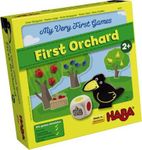 | First Orchard (2009) by Haba- This is a perfect first game because it's cooperative, the rules are easy, and the parts are fun to play with even if you don't play the game. I can't recommend this game more.
- BGG Profile
- Buy First Orchard @ Amazon
|
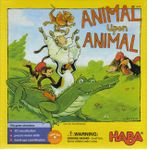 | Animal Upon Animal (2005) by Haba- This is another perfect first game because the parts are fun to play with. However, because you are stacking the animals, it requires an amount of dexterity that a younger child might struggle with.
- BGG Profile
- Buy Animal Upon Animal @ Amazon
|
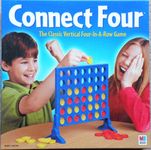 | Connect Four (1974) by Hasbro- This classic game has easy rules and the parts are fun to play with, though the discs might be a hazard if your kid likes to put things in their mouth. I didn't bother with the strategy of blocks or anything like that, but getting my kids to form rows/columns of their own color was easy to teach.
- BGG Profile
- Buy Connect Four @ Amazon
|
By 2-and-a-half or 3 years old, a child can begin learning the rules of simple games, but will still struggle playing them through if they are longer than 10 minutes. And they won't be grasping the strategies either, so you'll have to help them with that. But they can learn the rules and play by them. And because they can't read yet, the games listed don't require any reading.
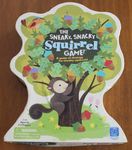 | The Sneaky Snacky Squirrel Game (2011) by Educational Insights |
 | Candy Land (1949) by Hasbro- Yes, I added Candy Land to this list. Despite it being an excessively dull and random game, the kids loved it and we played it a lot. I found it more enjoyable when I "stacked" the deck so that all of the players stayed relatively close to each other. We found if one person gets a huge lead, the kids yelled how unfair it was and wanted to quit.
- BGG Profile
- Buy Candy Land @ Amazon
|
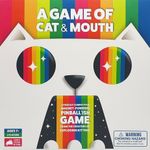 | A Game of Cat & Mouth (2020) by Exploding Kittens- This is a colorful, dexterity game where you trying to launch balls with cat paws to hit other balls. We never forced the rules for this one, but the kids loved playing with the board. This isn't appropriate, however, for kids who have a habit of putting toys in their mouths.
- BGG Profile
- Buy A Game of Cat & Mouth @ Amazon
|
 | Jenga (1983) by Hasbro- Again, another dexterity game which is better for the older kids who have a bit more control of their bodies. That said, the rules are simple and they can play with the bricks until they are ready to really play.
- BGG Profile
- Buy Jenga @ Amazon
|
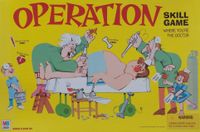 | Operation (1965) by Milton Bradley- The ultimate game of dexterity and stress. This game not only makes fun sounds and is a classic, it comes with endless themes to fit what your child likes. It also helps build their hand-eye coordination, so it's a double win.
- BGG Profile
- Buy Operation @ Amazon
|
 | Any Kid-Focused Bingo game- There are many types of bingo games out there for kids: ones that focus on letters/numbers, ones that have simple pictures, and more traditional ones. These are great for kids.
- Buy @ Amazon
|
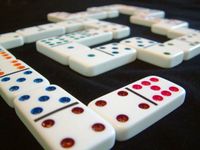 | Dominoes- The bones of Dominoes, like Jenga, can be played with without actually playing the game itself. The rules of Dominoes are fairly easy to grasp, too, when the time is right.
- BGG Profile
- Buy @ Amazon
|
By age 4 or 5, a child can begin really understanding strategic choices. These games have minor choices in them that will make winning easier. These games don't require any reading, either. Unless your child is very advanced, most 5-year-olds aren't reading much more than basic words, so it's not time yet to buy games where they need to read more than a word or two.
There has been a new
 | Outfoxed! (2014) by Gamewright- This game has some deductive reasoning built in as you search for the bad guy. It's a coop, so it reduces the stress of competition.
- BGG Profile
- Buy Outfoxed! @ Amazon
|
 | My First Castle Panic (2019) by Fireside Games |
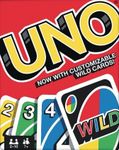 | UNO (1971) by Mattel- Despite being an often lampooned game, Uno is great for kids in this age group. The numbers and set collection is great for them as is the minimal stragety needed. The only issue is little hands holding a large number of cards.
- BGG Profile
- Buy Uno @ Amazon
|
After 6, a child is beginning to read and can understand more complicated rules. Thus you can begin adding more complex rules and games that require some reading.
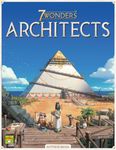 | 7 Wonders: Architects (2021) by Repos Production- We introduced our 6.5 year old to this simplified version of 7 Wonders and he loved it. It took him a bit of teaching to understand the rules and longer for solid strategy, but he eventually caught on. This was the first adult-level game he was introduced to and it was a winner.
- BGG Profile
- Buy 7 Wonders: Architects @ Amazon
|
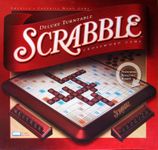 | Scrabble (1948) by Hasbro- This is another classic game which is great for a 6 year old who is just learning to read. My wife plays with our 6 year old with modified rules to help him piece together words from his letters.
- BGG Profile
- Buy Scrabble @ Amazon
|
| Dodos Riding Dinos: Dodo Dash (2024) by Detestable Games |
| Robot Quest Arena (2023) by Perfect Day Games |
| Captain Flip (2024) by PlayPunk |
Please support Board Game Helpers by using one of the affiliate links above if you're thinking about purchasing one of these great games. Thank you!